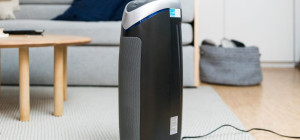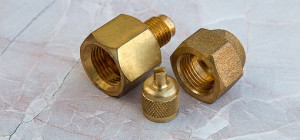When it comes to most tech, few devices or accessories have been as polarizing as robot vacuums. The first robot vacuums were made by Roomba in 2002, and people are still wondering if they are worth the money. Compare that to tablets, which were made in 2000 and are practically indispensable for most people. These vacuums have come a long way since they were first made and there are more reasons than ever to buy one, but a few significant drawbacks still exist. We’ll go through some cases for and against this technology so that you can decide if it’s time to buy one.
For: They Save Time
This should be a no-brainer, and it’s really the best reason for getting a robot vacuum. Just think about it: you could either sweep and vacuum your floor every day (which you and I both know probably doesn’t happen), or you can set the robot and let it do the job. Outsourcing your routine cleaning to a robot might sound lazy, and it kind of is, but there’s nothing wrong with that. You could either spend some time each and every day sweeping, or you could let the robot do it and not waste your own time.
These vacuums are great at scanning their designated rooms or areas and ensuring that they are clean. This ensures that you don’t get an embarrassing clump of hair or dust in the corner and keeps your floors looking wonderful.
Against: Only Usable on Certain Floor Types
Robot vacuums are getting better in this regard (we’ll cover that in a second), but in general these devices tend to have a harder time with rugs and carpeting, especially thicker rugs. They are best on flat surfaces like tile and hardwood. Not only that, but they have less suction power than a standard vacuum, meaning that you may not get the same level of cleanliness on carpet as you would on a flat surface.
That being said, this technology is starting to get better with more difficult surfaces. Some can automatically transition from floor to carpet, others might need to have a button pushed to switch modes. Do your research and ensure that the model you choose can properly clean your floors.
For: Thorough Cleaning
As long as the robot vacuum is being used on an approved surface, you’ll find that they are very thorough and efficient at cleaning. Unlike a broom that tends to offer less-than-satisfactory results and large vacuums that sometimes have trouble with certain particles or small items, a robot vacuum is low to the ground, constantly scanning for dust and have a design specifically made to catch and collect particles on the floor.
While the thoroughness can be contested with thick carpeting (see the point above), you’ll find that a robot vacuum does a wonderful job on flat surfaces and will work much better than manually sweeping.
Against: Improper Mapping
Much like the case with floor types, this one has significantly improved since the inception of robot vacuums, but it’s still a problem here and there. In order for the robot vacuum to properly clean your home, it must be mapped so that it knows where to go. Mapping has become easier over time. In fact, most robot vacuums now use WiFi and sophisticated scanners to find walls and scan for dirt and dust, but you’ll still have to put some effort into them to ensure that they work correctly.
In the worst-case scenario, your robot vacuum might get caught spinning in circles and not really going anywhere in particular or get stuck under something. The best-case scenario is that it will immediately recognize walls and other boundaries and will quickly adapt to your living area. Most people find themselves somewhere in the middle. You’ll have to do some work beforehand, so it could be a little annoying at first, but sooner or later the device will catch on.
Conclusion
So, are robot vacuums worth the expense? It’s still yes and no. They are getting better every year and are getting new features like mopping, better carpet coverage and superior scanning. They also save you time and ensure that your floors are kept spotless. On the other hand, they are a little expensive, have trouble with thick carpeting and require some manual work when it comes to mapping. They definitely show promise, but it’s your decision as to whether they are really worth it or not.










